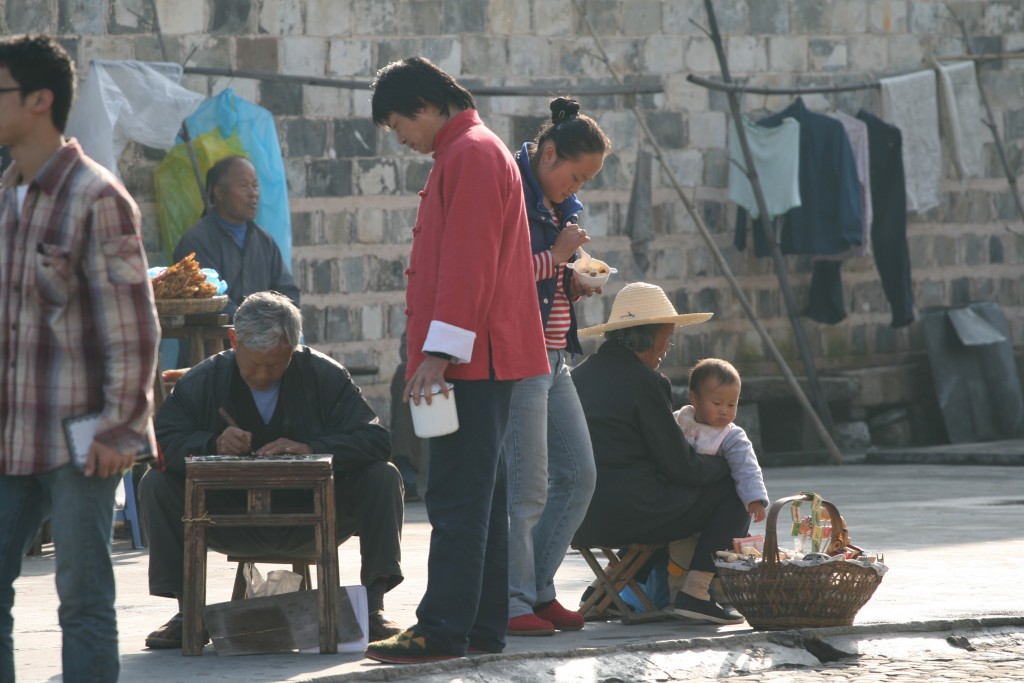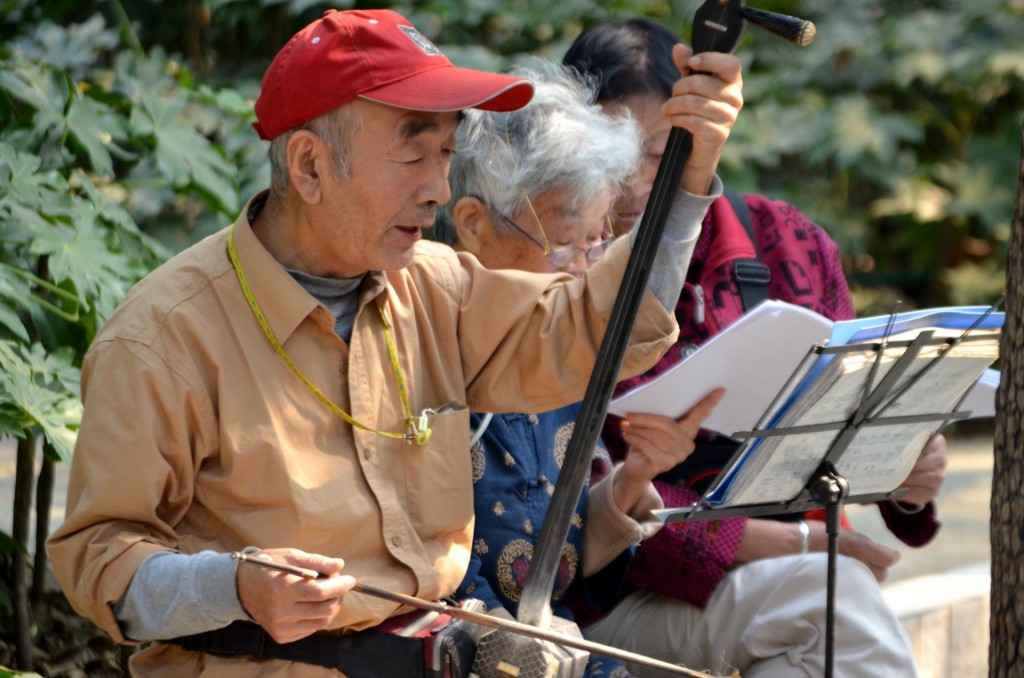 Christina Maags is a Lecturer in Chinese Politics at the School of Oriental and African Studies (SOAS), London, specializing in the politics of demographic change in China. (1,278 words)
Christina Maags is a Lecturer in Chinese Politics at the School of Oriental and African Studies (SOAS), London, specializing in the politics of demographic change in China. (1,278 words)
Preparing for the growing ageing population is a huge cause for celebration and yet also a key concern in many countries. Yet, in developing countries, which are experiencing a greater speed of population ageing at a time when they are lacking the financial resources and institutions to provide long-term care (LTC) services, finding policy solutions is becoming ever more urgent.
The People’s Republic of China (PRC) is facing these challenges while the decades of one-child policy are exacerbating these trends, as fewer and fewer younger people are left to provide care to their older relatives. Although in China, as in other East Asian countries, the cultural norm of filial piety has been strong, the stark decline in fertility translates into one younger person, mostly female, sometimes having to care for four to eight older relatives or in-laws. In 2016, 213 million, or 16.7% of the Chinese population, were over 60 years old (Cheng, 2017). Among these older people almost 150 million have long-term health conditions, and more than 40 million are living with deteriorating mental or physical health. As an editorial in The Lancet argues, China’s population ageing is ‘a ticking bomb’ (The Lancet, 2016).
In addition, China’s rapid socio-economic modernization and urbanization have resulted in fragmented healthcare and pension systems across regions and between rural and urban areas as well as in greater mobility of the younger workforce towards the cities, resulting in so-called ‘empty nesters’, older persons living alone without family care. So what kind of strategy does the Chinese government pursue to promote LTC provision? And what challenges does it face when trying to implement this strategy?
(1) Relying on filial piety
Given China’s traditional norm of filial piety, the Chinese government has resorted to inscribing family caring responsibilities into national law. According to the PRC’s Law on Protecting the Rights and Benefits of Older Persons of 2013, for instance, children are legally obliged to frequently visit and contact their parents, pay for LTC provision and, if necessary, financially support their parents with a proportion of their monthly income. Moreover, public education campaigns remind younger generations of their duty of providing social care by demonstrating exemplary behaviour as well as grotesque scenes of ‘unfilial’ family members in graphic billboards and posters (Zou, 2016). Yet this narrative seems out of touch with reality. Younger family members often live far away, are not willing to live with their parents and are not able to provide LTC to older people with special needs, such as dementia or depression. Many, mostly female family members, would need to give up employment to provide LTC and are just not financially able to provide care. Moreover, as there is an immense shortage of trained social care providers, families who can afford to hire care workers have to rely on untrained workers from rural areas, who are often only able to support older people in household activities.
(2) Improving social welfare institutions
While the state sends a strong message out to society to take on LTC responsibilities, its welfare system is underdeveloped and fragmented. During the Mao era, work units (Danwei) or rural production units, called ‘People’s Communes’, provided all social welfare services. The later reforms initiated by the Reform and Opening policies since 1978, have eroded this system, shifting welfare responsibilities to society at large and the underdeveloped NGO sector. As Chen (2009) notes, ‘The biggest losses for the average aging Chinese included gaps created between the vanishing old occupation – or Danwei-based welfare system and a new, separate social security system, which the Chinese are still trying to complete as of this writing’ (2009: 176).
Although the Chinese government has set up healthcare and pension systems, they differ for rural, urban and migrating populations and across geographical regions. This creates what Wong (1998) describes as ‘one country, multiple systems’. In particular, local government is in charge of implementing an ever-increasing number of laws, five-year plans and policies. These individually address, for instance, the promotion of LTC infrastructure and training social care workers. Local government bodies, however, often do not have the money to implement these regulations. This patchwork regulatory approach and regional differences in financial and administrative capacities sustains social inequalities, particularly between the rural and urban population.
(3) Encouraging experimentation and privatization
Systemic fragmentation of social care provision is exacerbated by the common Chinese practice (though China is not alone in this) of engaging in local policy experimentation (see Heilmann, 2008; Heilmann and Perry, 2011). As a result, municipalities differ in their approach to LTC provision and financing: while Qingdao municipality, for example, is experimenting with LTC social insurance, Nanjing municipality provides means-tested care vouchers and Shanghai is experimenting with financing LTC through its health insurance schemes (see Yang et al., 2016).
Again, municipalities with greater financial resources are taking the lead in finding new ways of promoting LTC provision and financing, whereas underdeveloped areas are lagging behind. It is therefore questionable how local government organisations, which have only begun to develop their social welfare systems over the past two decades, are going to be able to foster LTC provision when simultaneously facing financial distress.
Finding unity among diversity
While the Chinese government’s key strategy for LTC provision has been to promote family care giving and private provision – so increasing individual and family members’ caring responsibilities – its regulatory approach may need more coherence and focus. The following are key challenges: (1) A plurality of laws and regulations addresses different aspects of LTC separately; (2) social welfare institutions and their administration are fragmented; (3) local government policy experiments exacerbate the diversity of LTC provision and financing across China.
Although, given Chinese regional socio-economic differences, it is clearly difficult to implement a ‘one size fits all approach’, a national, more coherent regulatory framework may help to integrate these various regulations and welfare institutions locally. While richer regions may be able to fund and experiment with LTC provision, underdeveloped regions, particularly rural areas, seem to be left on their own with this problem. There is a need to reinforce unity instead of focusing too much on diversity within Chinese LTC strategy.
China is functioning as a laboratory of new policy approaches to LTC provision and financing. It could thereby develop policy innovations that might be emulated by other developing countries. However, the ambiguity and diversity within the Chinese approach poses questions about the sustainable development and national reach of a clear approach to care for older people.
Christina Maags is a Lecturer in Chinese Politics at the School of Oriental and African Studies (SOAS), London, specializing in the politics of demographic change in China. (cmaags@hotmail.de)
References
Chen, S. (2009). Aging with Chinese Characteristics: A Public Policy Perspective, Ageing International, 34, 172-188.
Cheng, M.W. (2017). Elderly services to address aging population, China Daily, 29 March 2017, [online] Available at: http://www.chinadaily.com.cn/china/2017-03/29/content_28716504.htm (Accessed 3 September 2017).
Heilmann, S. (2008). From Local Experiments to National Policy: The Origins of China’s Distinctive Policy Process, The China Journal, 59, 1–30.
Heilmann, S. and E. Perry (eds.). (2011). Mao’s Invisible Hand: The Political Foundations of Adaptive Governance in China. Cambridge MA: Harvard University Asia Center.
The Lancet. (2016). Ageing in China: a ticking bomb, [online] Available at: http://www.thelancet.com/journals/lancet/article/PIIS0140-6736(16)32058-X/fulltext (Accessed 2 September 2017).
Wong, L. (1998). Marginalization and social welfare in China. London: Routledge.
Yang, W.; J. A. He; L. Fang and E. Mossialos. (2016). Financing institutional long-term care for the elderly in China: a policy evaluation of new models, Health Policy and Planning. Available at: http://heapol.oxfordjournals.org/cgi/content/short/31/10/1391?rss=1.
Zou, S.C. (2016). Institutionalising Filial Piety, The Australian Centre for China in the World, [online] Available at: https://www.thechinastory.org/yearbooks/yearbook-2014/forum-all-that-is-old/institutionalising-filial-piety/ (Accessed 28 August 2017).

